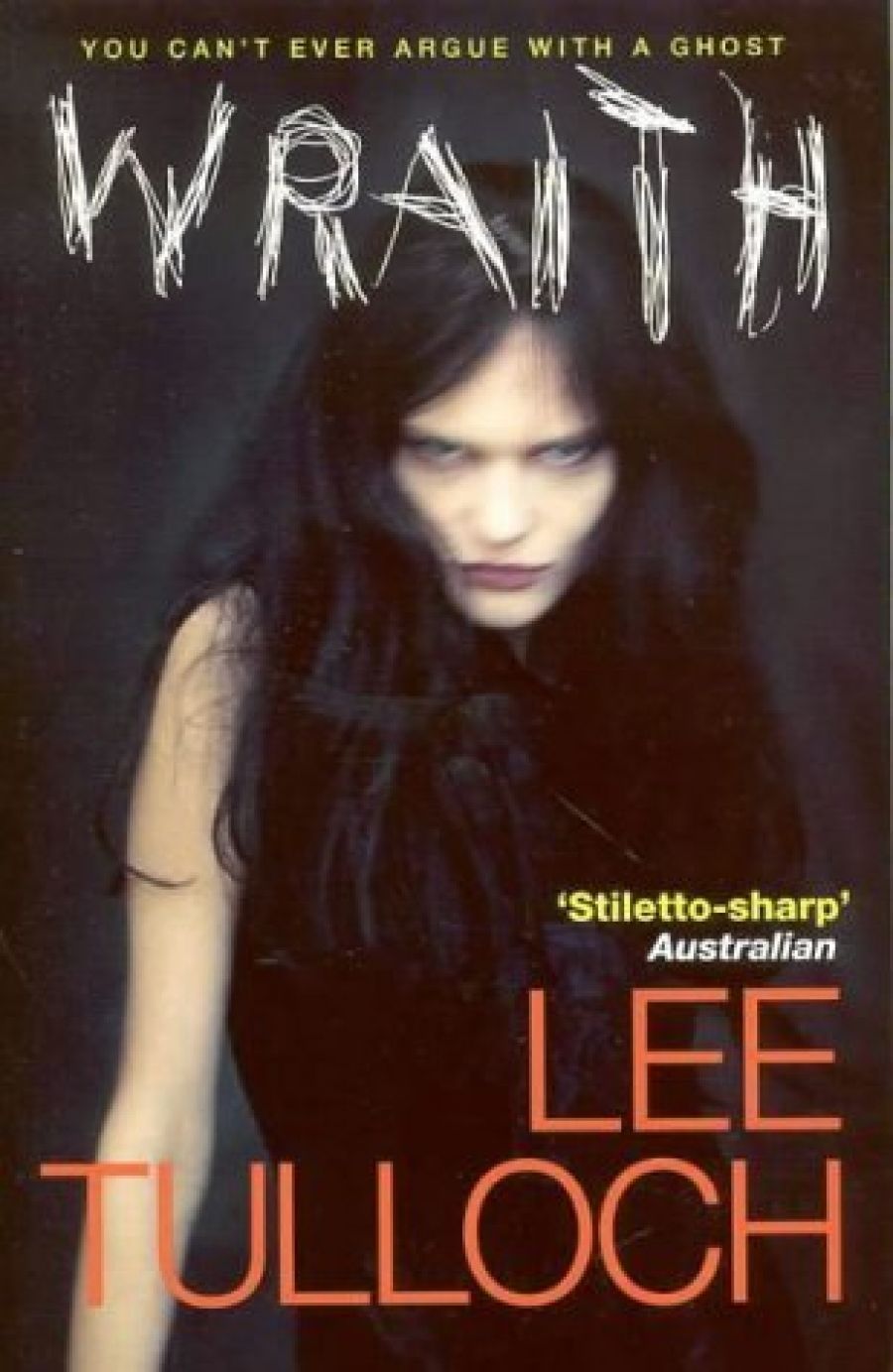
- Free Article: No
- Contents Category: Fiction
- Review Article: Yes
- Article Title: Celebrity Stakes
- Online Only: No
- Custom Highlight Text:
In the hierarchy of celebrity, there is one group of people constantly referred to with a casual, first-name intimacy. The ‘I don’t get out of bed for less than $10,000 a day’ brigade, the supermodels. Linda and Naomi, Christy and Kate. It’s not that we know anything about them as individuals, nor that they seem any more approachable than any other kind of late twentieth century celebrity. It’s the brand-name simplicity of their fame , the instantly recognisable qualities they incarnate. Recognisable at a glance, they are trademarks, bestowing their signature style on garments, products, publications, and boyfriends.
- Book 1 Title: Wraith
- Book 1 Biblio: $19.95 pb, 503 pp
Now, Berenger is more romantic, dangerous, scary, and modern than ever. She is dead. And, what’s more, she’s a ghost. On the first page of Wraith, she makes a spectral appearance to her personal assistant, a young woman known as Nile. Nile is being held as a suspect in a New York jail, during an investigation into the mysterious circumstances of the model’s death.
But Berenger is as uncertain as anyone else about her demise. Was it an accident? Was it murder? Was Nile involved? Did it have anything to do with Berenger’s husband, the eighty-two-year-old composer Aaron Karsner? Or with Karsner’s grandson and Berenger’s former lover, the rock star Addam Karsner? Does it have anything to do with Berenger’s past? With Nile’s past? And what does it mean for Nile’s future?
Over 500 pages, Wraith manages to sustain our interest in these questions. It’s a thriller, a whodunit, a genre that depends on promising and withholding gratification, on revealing what really happened … but not yet. It is also a piece of female Gothic, a tale of deaths, apparitions, family inheritances, confusions of identity, and questions of who to trust and who to believe: a story which explores the female experience through extremes, through heightened sensation and occult manifestations.
But the novel also has direct, immediate pleasures, moments of deft comedy and knowing one-liners: Tulloch is very good at verisimilitude, at making those Lagerfeld quotes and pieces of fashion industry gossip absurdly believable and believably absurd.
Wraith’s narrator, Nile, is like the governess in a nineteenth century novel, the marginalised figure who is more intelligent than those she serves, but less beautiful, less rich, and less favoured, the one who yearns for something from the world she does not belong to. (Specifically, she longs for Addam, whose exact relationship with Berenger seems impossible to determine, but is crucial to the whodunit elements of the story.)
Nile, born Jane Anne Kirk, notices detail. She has a sharp, unerring eye. She also reflects and passes judgment. On the notion of beauty that the fashion industry seizes on and exploits, she says severely:
‘Fashion’ beauty was the kind that never gave you anything back. It never put its arms around you or stroked your hair. And you never wanted to reciprocate. You never wanted to touch it back, like you might have wanted to reach out and touch Greta Garbo, or any of the kinetic, intelligent beauties of the screen. A magazine beauty was as flat as the paper she was printed on. She was a four-colour process, that’s all.
But, like all the best narrators, she is unreliable. She is emotionally entangled with at least one of the central characters. She is a plausible suspect in Berenger’s death. And The Wraith turns out not to be the first of Nile’s employers to have met a sticky end.
Wraith has its longueurs, scenes which drag and falter and go on for too long, like Berenger on a Paris runway. But it’s an intelligent, intriguing, sometimes unwieldly work. Its satire is acute and observant, yet it has feeling and warmth: Tulloch isn’t indulgent towards the world of fashion, but she isn’t glibly dismissive either. And as the novel opens out, it takes in other extremes of female experiences, including an eccentric order of nuns and a young woman who was the victim of a Hindu dowry burning. There is also a plot twist that links Nile and Berenger in ways that it would be unfair to reveal, but it adds another element to one of the central themes of Wraith: the female body, as something to be feared, distorted, and exploited; a source of mystery that remains long after the questions of who, how and why have been resolved.


Comments powered by CComment